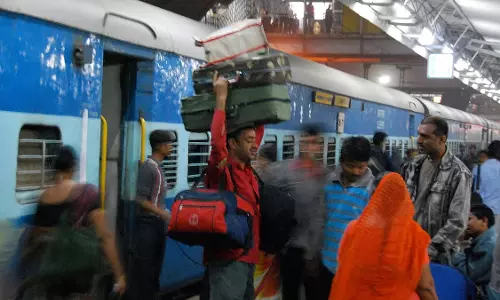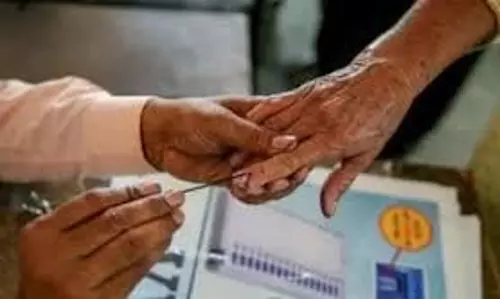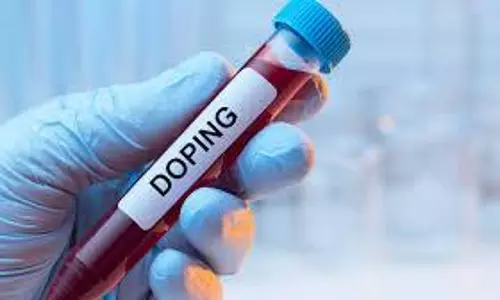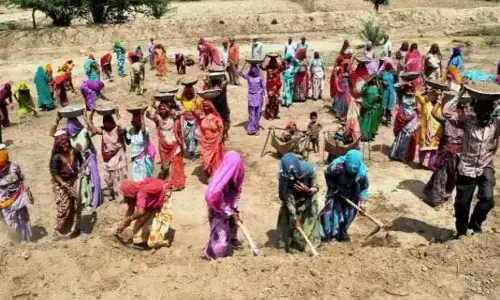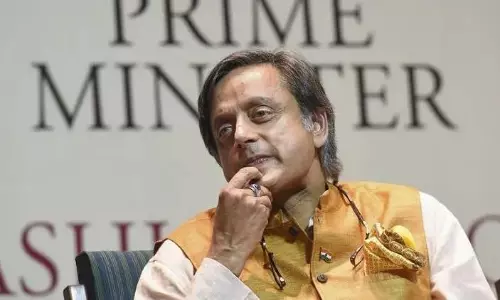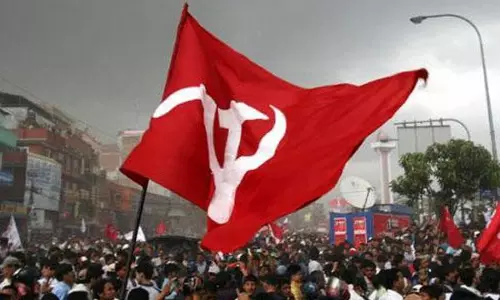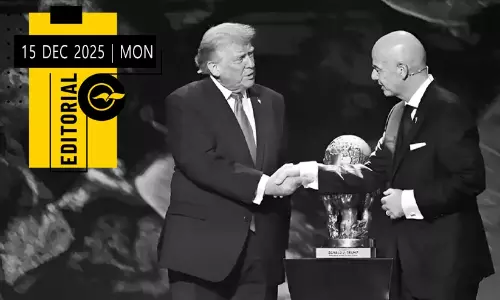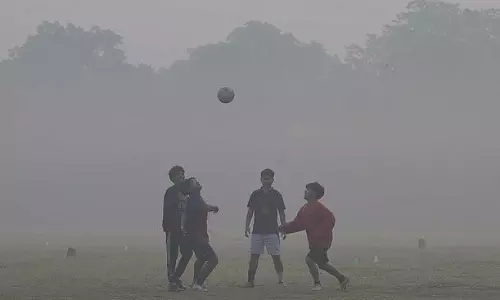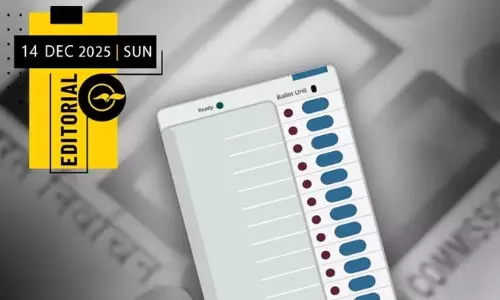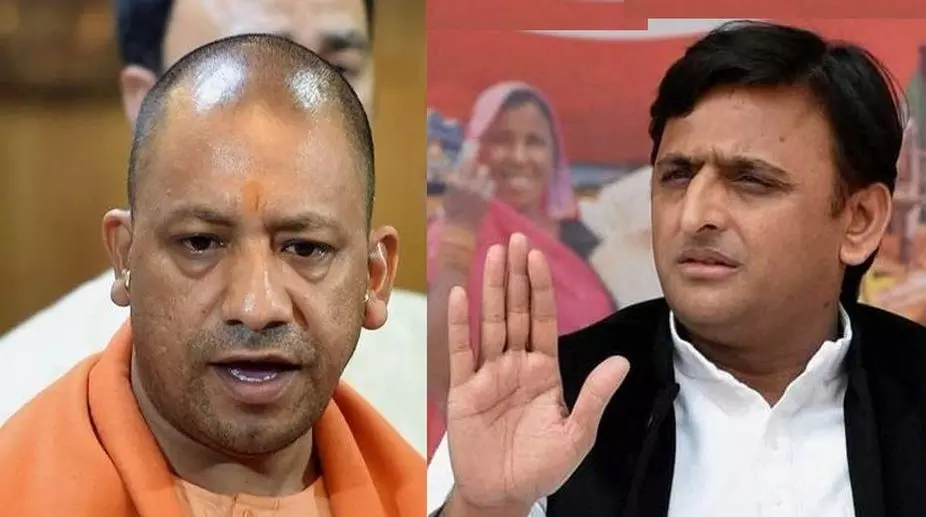
BJP forced to bank heavily on religious divide card in UP
text_fieldsUP chief minister Yogi Adityanath & Samajwadi Party leader Akhilesh Yadav (file photos)
The forthcoming state assembly election in Uttar Pradesh is no ordinary polling exercise. Unlike several past elections, this is seen as some kind of a semi-final to the Lok Sabha election in 2024 - the political route to Delhi goes proverbially via Lucknow. That is the reason why not only the ruling Bhartiya Janata Party (BJP) but also its key adversary Samajwadi Party (SP) are leaving no stone unturned to win the 2022 battle in the country's most populous state. Even as the North Indian winter is making it more and more chilly, the war of words is getting hotter and hotter, particularly between these two parties that are seen as the main players in the electoral game.
Even as Bahujan Samaj Party (BSP) and Congress are also officially in the fray, both parties are seen more as fringe players. Going by record of the last assembly election in 2017, it would seem a grossly unequal fight now, as the BJP had led with an unprecedented 312-seat win in the 403-member state assembly, while SP trailed behind with just 47 seats , followed by 19 of BSP and 7 of the Congress. BJP scored 39.6 per cent votes , while SP made it to 21.8 per cent. Interestingly, while BSP got 22.2 per cent votes share, it failed to convert into even as many seats as SP. What was very significant in that election is that BJP took a jump by 265 seats from its 2012 tally, while SP rolled down to a corresponding loss of 177 seats and BSP went down by 61 seats.
The BJP's sweep was clearly attributable to the charisma of Prime Minister Narendra Modi, who in a surprise move eventually decided to anoint Yogi Adityanath as the chief minister, even though his original choice was stated to be Manoj Sinha, then Union Minister of State for Railways and Communications. Since then , Yogi has worked hard to establish himself as a state leader by seeking to rise beyond his image of a saffron-clad 'mathadheesh' (head of a religious institution). Even as he remained a 24x7 chief minister, carrying out multiple activities across the state, he always seemed to revert to his tried and tested political card of asserting himself as a hard-line Hindutva leader. No wonder, the politics of communal divide, which remained his mainstay to ensure his rise to power, was spelt out more vociferously than all the steps he took to show his skills in governance.
After the Supreme Court verdict went in favour of building the Ram temple in Ayodhya, attention was diverted towards Kashi-Vishwanath temple at Varanasi, where the prime minister recently inaugurated the newly built impressive Rs 350-crore Kashi-Vishwanath corridor. What seems to be clearly on their agenda now is Mathura which has also been a contentious shrine on account of the existence of a 17th century mosque in close proximity to the Krishna Janmbhoomi temple. It is therefore a foregone conclusion that each of these three places – Ayodhya, Varanasi and Mathura will be used profusely to whip up Hindu religious passions in the run up to the elections.
The narrative being set by him for the election was precisely on those very lines of forging communal divide. Interestingly, the chief minister was busy claiming through loud advertisements that he had transformed Uttar Pradesh by ushering in a new phase of development. But even this so-called claim was laced with a subtle message of Hindu-Muslim divide. His propaganda machinery does not lose any opportunity to create a false impression that Samajwadi Party was busy appeasing Muslims at the cost of Hindus. This got compounded when SP chief Akhilesh Yadav made an irrelevant and absurd reference to Jinnah. That was like giving a weapon in the hands of his BJP rivals to blast him every now and then.
For a long time, BJP succeeded in trapping Akhilesh Yadav in the narrative set by them. Most of his time was spent in refuting BJP's allegations against his government's "poor law and order, women's safety, corruption and Muslim appeasement". However, thanks to the unexpected surge of youth at Akhilesh's more recent rallies, both Modi and Yogi seem to be compelled to also start referring to more serious issues like "unemployment, price rise and corona management". But they were trying to build a false narrative through a massive publicity campaign. These campaigns have claimed that Yogi "created 4.5 lakh jobs", "doubled farmers' income", while dismissing price rise as a "false propaganda by the opposition."
Even though it was far from true, the Yogi government did not hesitate to declare that "no one died due to shortage of oxygen during the second phase of Covid". However, what caught the entire BJP leadership unawares was Priyanka Gandhi's 'women manifesto'. Despitethe poort shape of the Congress party organization in UP, Priyanka's promise of providing 40 per cent reservation to women left BJP stumped. Thereafter, both Modi and Yogi have been trying to impress how much they were concerned about women. Priyanka, who had earlier also taken up the Hathras and Lakhimpur cases more vociferously than anyone else, has been able to achieve her limited objective of putting the Congress back on its feet in the state after more than three decades of oblivion. Whether she is able to take her party to any comfortable strength in 2022 is debatable but there can be no denying that Priyanka's sustained efforts would put the Congress on a far better pitch in 2024, when the nation goes to polls. However, the immediate beneficiary of Priyanka's efforts is lekely to be SP – in the same manner as the Anna Hazare movement benefited Modi in 2014.
As for BSP, the manner in which Mayawati chose to keep herself completely aloof from the ground indicates that with the CBI sword still dangling over her head, she was refraining from any direct confrontation with the ruling dispensation. Her only representative visible on the ground was the party's national general secretary Satish Misra through whom she was believed to have built her social engineering of bringing in Brahmins under the party's fold in 2007. However, even as Misra's rallies were drawing crowds, BSP stands little chance to make much headway in terms of seats, even though it may still retain its core vote bank of 18 per cent Jatav Dalits.
Political analysts believe that Mayawati was being used by the BJP to eat into Akhilesh's Muslim support base – something that AIMIM's Asaduddin Owaisi has been blamed for doing for the past few months. It is widely alleged that both Mayawati and Owaisi were batting for the BJP. The reason was simple. Any dent in Samajwadi Party's traditional vote bank of Muslims would mean advantage BJP, to which the success of Akhilesh Yadav in stitching multiple alliances with smaller backward caste-based parties is a strong challenge. And what appears to have alarmed them even more was the huge attendance at Akhilesh's rallies – even far beyond the SP chief's own expectations.
But , what actually brought the entire BJP leadership on the back foot was Modi's decision to roll-back the farm laws after realization dawned that the one-year long agitation on the Delhi border would seriously damage BJP's prospects in West UP. BJP had won as many as 109 of the 134 assembly seats in that region in 2017 thanks to Hindu polarization with the Jat-Muslim divide in the wake of the infamous Muzaffarnagar riots in 2013. Significantly, the farmers' agitation reunited the Jats and Muslims who had remained together until the Muzaffarnagar riots.
More recently, Akhilesh Yadav gave a jolt to the BJP by literally stealing away three ministers and half-a-dozen MLAs – all belonging to OBCs from the ruling BJP. It is a major blow to chief minister Yogi Adityanath , who is understood to have assured the party bigwigs in Delhi that no backward leader was going to ditch him. What began with the revolt by Labour and Employment minister Swami Prasad Maurya , was followed up by the resignations of Environment Minister Dara Singh Chauhan and Dharam Singh Saini over the next 48 hours. Together with them marched out half a dozen BJP MLAs .
Significantly, all of them said that they were disillusioned with the ruling dispensation because the government had not cared to attend to issues related to the welfare and well being of OBCs. ""I am resigning because of continued neglect of Dalits, OBCs, farmers and unemployed youth by the BJP Government", said Maurya in his resignation. And almost the same sentiment was expressed in all the resignations that followed.
On the whole analysts see this as a reflection of the Hindu polarization effort proving to be counter-productive, perhaps because of Yogi's overdrive to communalise the election. Apparently, Modi was led to believe that withdrawal of the controversial farm bills would prompt Jats to once again rally behind him, a hope not seen being realised. And any move that obstructs BJP's very overt 'religious divide' tactics is not good news for the party. That is why it appears that the saffron brigade has, of late, let loose its hardliners to spread hatred.
What one saw happening in Haridwar - where a Hindu right wing group led by a sadhu gave a call for genocide against Muslims - appears to be a part of that drill. A similar thing was repeated more recently in Varanasi, where some activists of Vishwa Hindu Parishad and Bajrang Dal put up posters at the Ganga ghats, banning entry of non- Hindus. What was worse was that the police in both cases (Uttarkhand police in Haridwar and UP police in Varanasi) have been going slow on arrests not arrested anyone so far. Of course the ritual of lodging FIR was done in Haridwar, but in Varanasi , no FIR has been lodged even though it is a fit case for the police to acting be doing so suo motto.
All events clearly indicate that BJP is still keen on playing its religious trump card ultimately. Whether it will pay this time again will be known only on the results day.




